Using Midjourney To Learn About Photography Film Characteristics
Many photographers are looking at AI programs, such as Midjourney, and wondering how they could benefit from it.
You’re not alone. I have been thinking those same thoughts.
(Note: Learn how to use Midjourney by clicking this link– (Includes a limited-time discount for our readers): Download Phil Steele’s ‘Synthetic Photography Masterclass’.)
Today, I would like to show you a little Midjourney trick that can teach you about film photography. Specifically, what different films had different characteristics, and how did they appear in a final image?
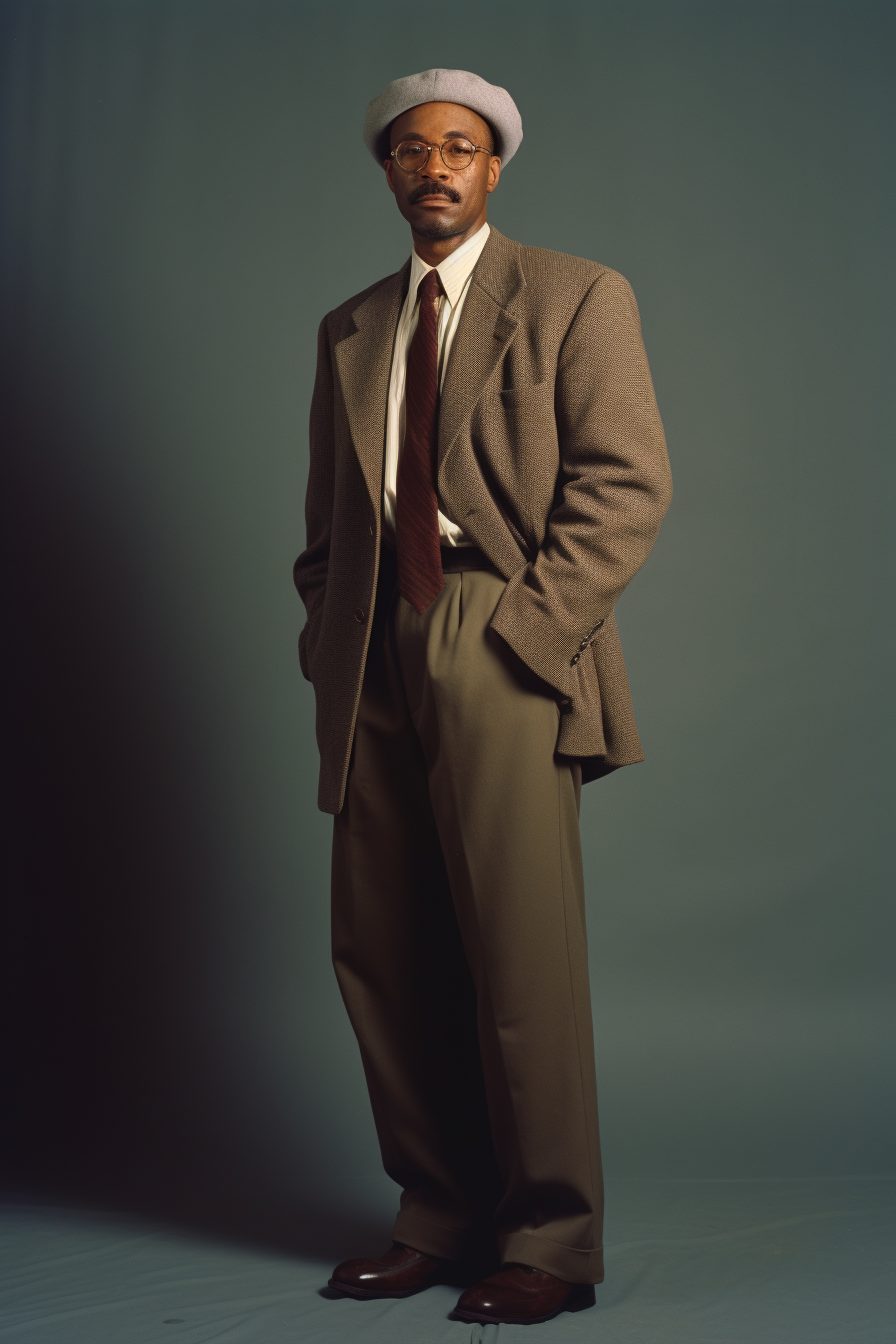 001 – Photograph by Midjourney and Prompts by Kent DuFault
001 – Photograph by Midjourney and Prompts by Kent DuFault
To test this feature, I made a list of film types I used a lot back in the day. I came up with six color films and four black and white.
I wasn’t able to use the same character for each film test. However, by hacking through some of Midjourney’s known quirks, I could get at least similar shots with similar lighting. We will talk about that more another day.
Why would a photographer want to do this exercise?
A film base was always developed with a specific use in mind. Fuji Velvia and Kodak Kodachrome were the predecessors of the deep, rich color and high contrast often seen today in overly color-saturated digital images.
The Ilford XP2 black and white films were known for rich tones and smooth transitions between tones. In comparison, Kodak Tri-X black and white film was a higher contrast film with a gritty feel.
I propose you use Midjourney to discover some ‘looks’ of film from the past and then use that knowledge to recreate the look in your digital photography.
A challenge for sure. But I think you’re up for it. Let me share some of my results to get you inspired.
Before we do that, let me show you how to add a film characteristic prompt in Midjourney.
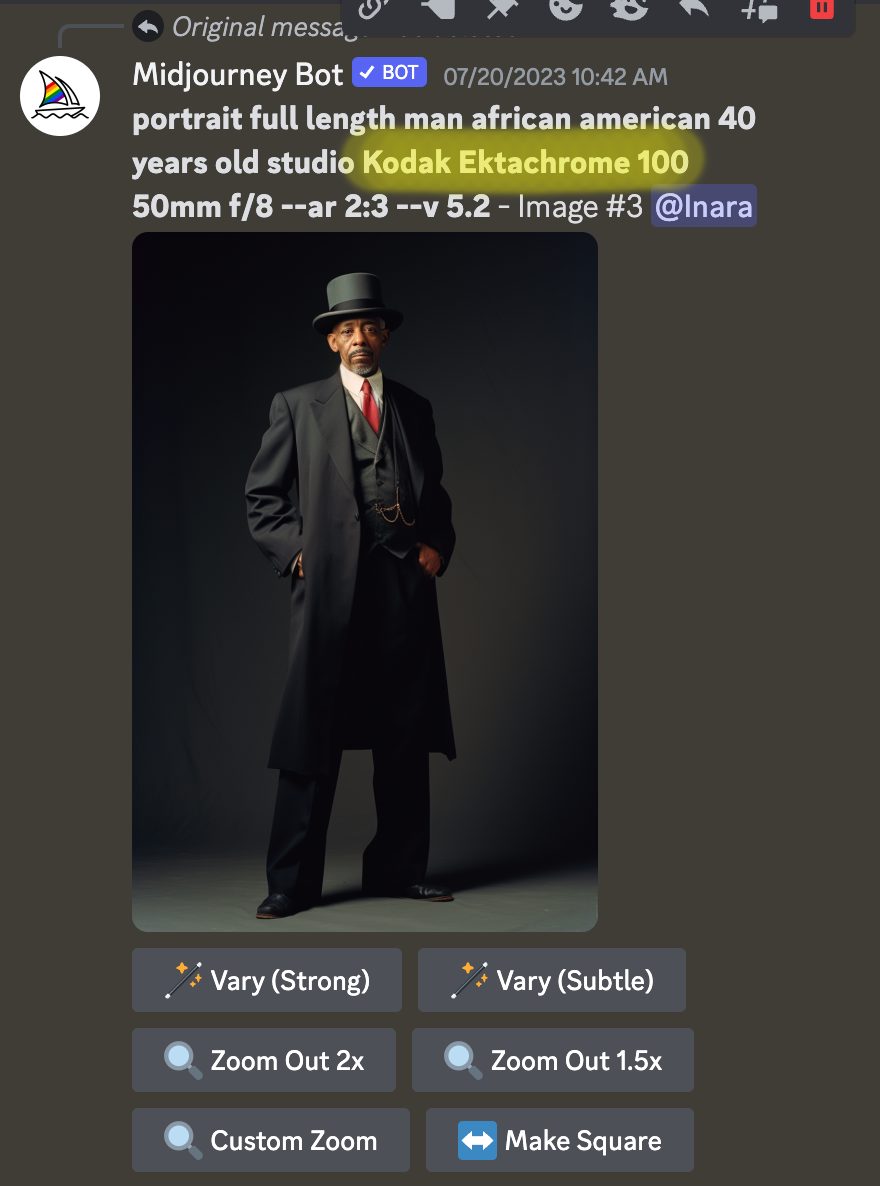 002 – Photograph by Midjourney and Prompts/Parameters by Kent DuFault
002 – Photograph by Midjourney and Prompts/Parameters by Kent DuFault
When adding prompts to Midjourney, it seems to make little difference if you simply write each word in line, separate each thought with a comma, or write complete sentences.
Midjourney focuses on what it thinks is important and ignores everything else.
So you can see my prompt was – “portrait full length man African American 40 years old studio Kodak Ektachrome 100 50mm f/8”.
The things you see after that in image 002 are called parameters. So, I used MidJourney to create an image with an aspect ratio of 2:3. I also told it to use Midjourney version 5.2. Both of these requests are parameters and not prompts.
Midjourney has numerous different versions. You can access them all (currently), and each will give slightly different results.
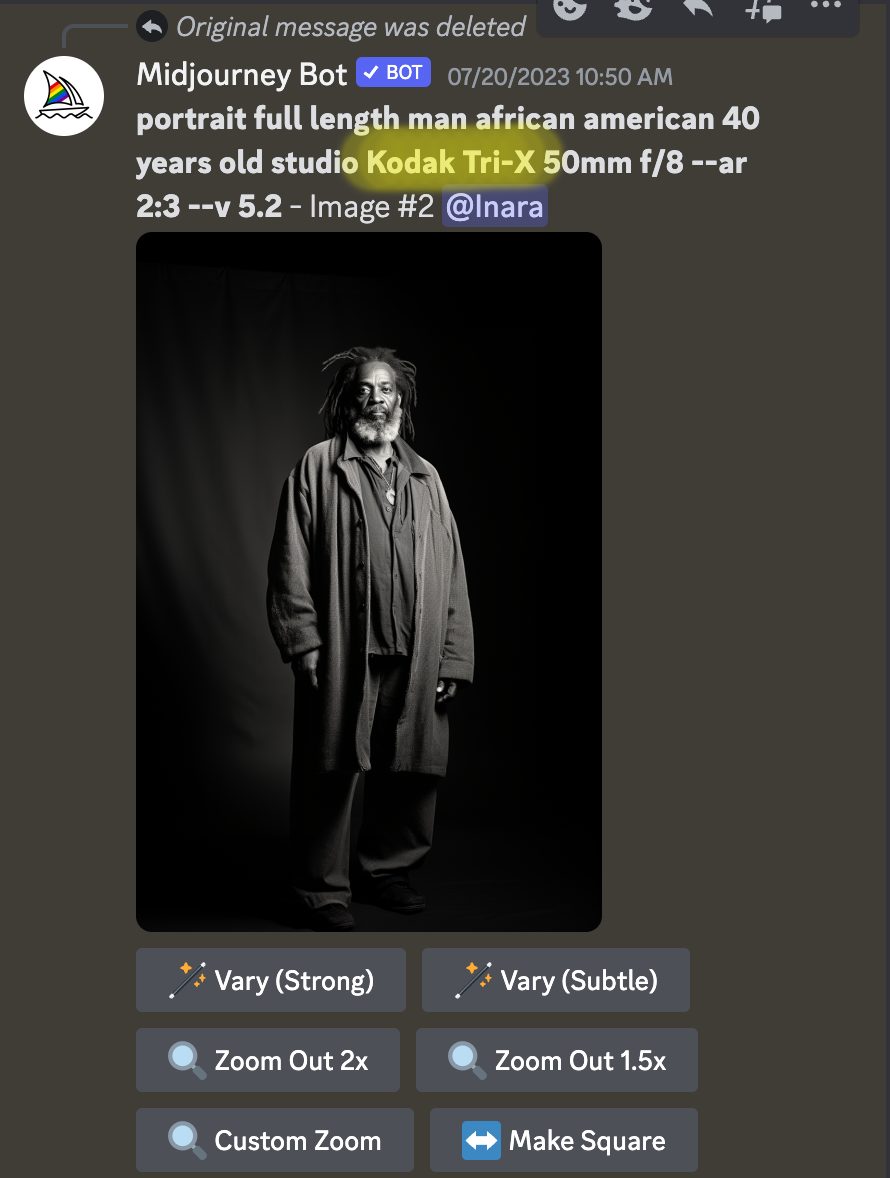 003 – Photograph by Midjourney and Prompts/Parameters by Kent DuFault
003 – Photograph by Midjourney and Prompts/Parameters by Kent DuFault
You can see how using the exact same wording while only changing the film type gave me a black-and-white portrait.
Note: I am learning how to apply different prompts and parameters to the same main subject. More on that in the future.
Now, let’s look at some film types and characteristics in words and with a visual.
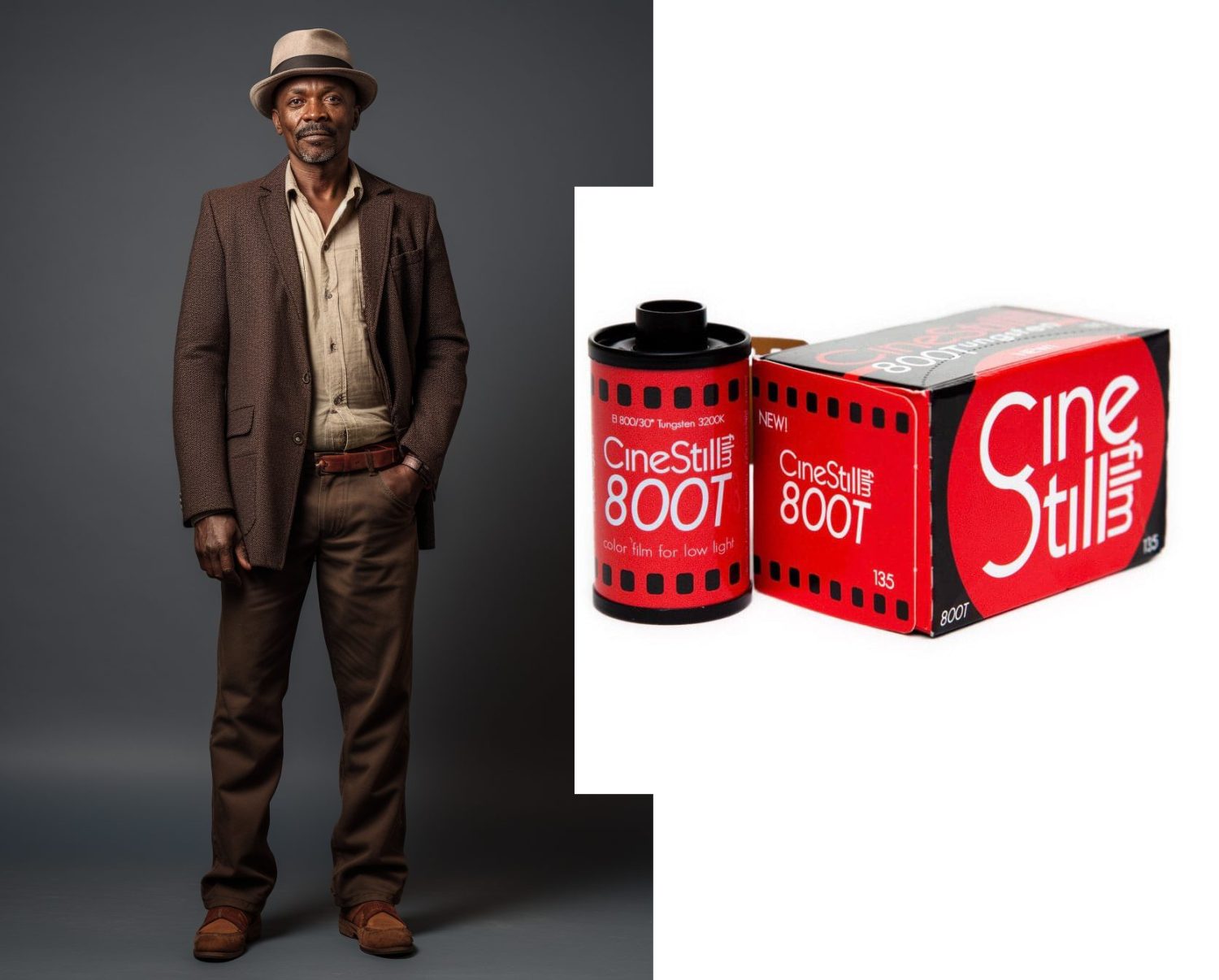 004 – Photographs by Midjourney and Cinistill – Prompts/Parameters by Kent DuFault
004 – Photographs by Midjourney and Cinistill – Prompts/Parameters by Kent DuFault
CINESTILL 800Tungsten is a unique color film for still photographers. This 800-speed tungsten balanced color negative film is based on the same gold standard motion picture technology used by top cinematographers worldwide. Designed for difficult low-light tungsten situations, this flexible film is suitable for use in different lighting situations to achieve various looks.
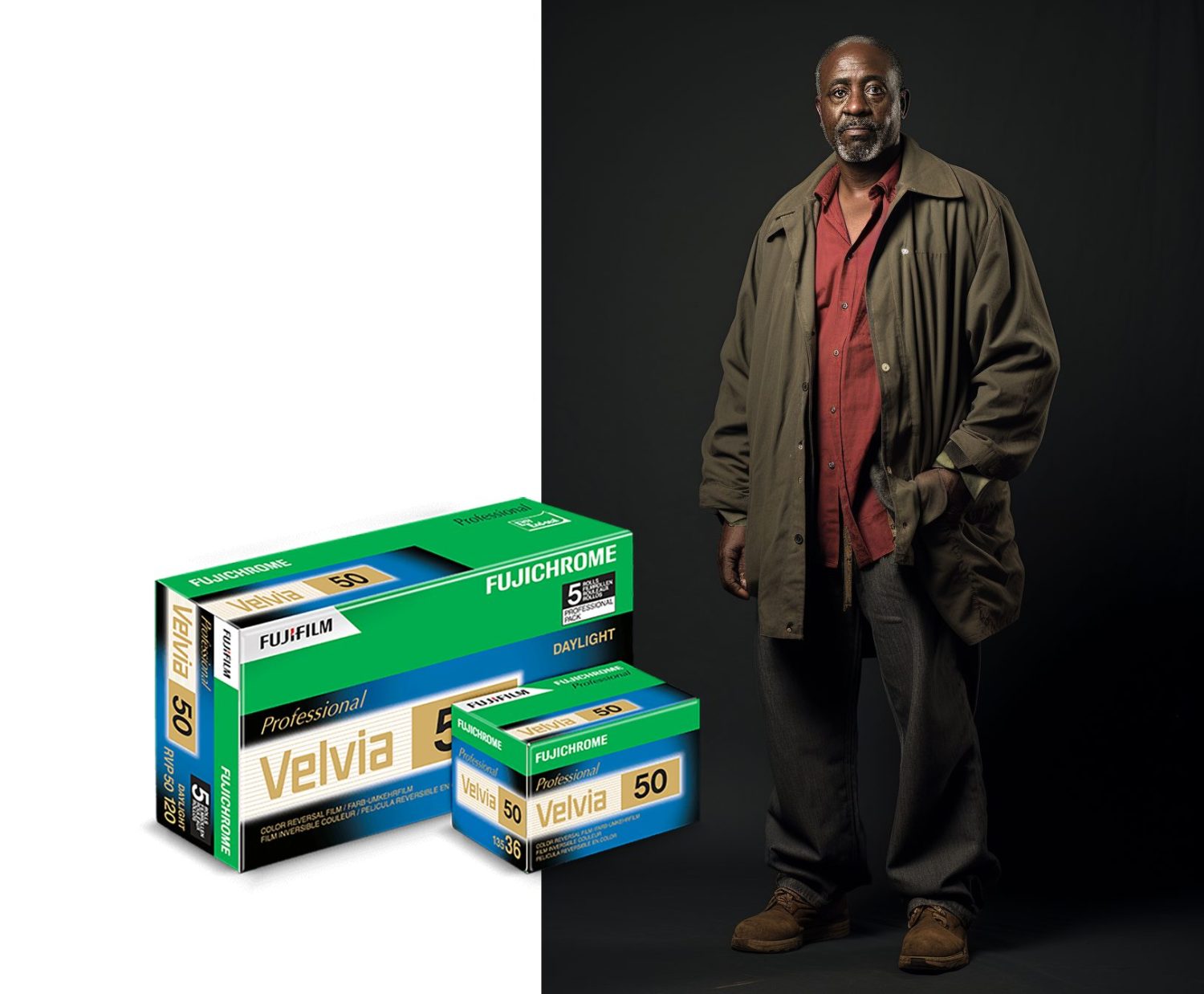 005 – Photographs by Midjourney and Fujifilm USA – Prompts/Parameters by Kent DuFault
005 – Photographs by Midjourney and Fujifilm USA – Prompts/Parameters by Kent DuFault
Fujifilm Velvia 50 is a professional, high-quality, daylight-type color reversal film with superb granularity and world-class image color-saturation and vibrancy levels. It captures Neutral Grays and Excellent Deep Shadows. Velvia 50 provides a vivid skin-tone reproduction with exceptional, unparalleled color saturation. Superb color-tone depiction for rich color reproduction.
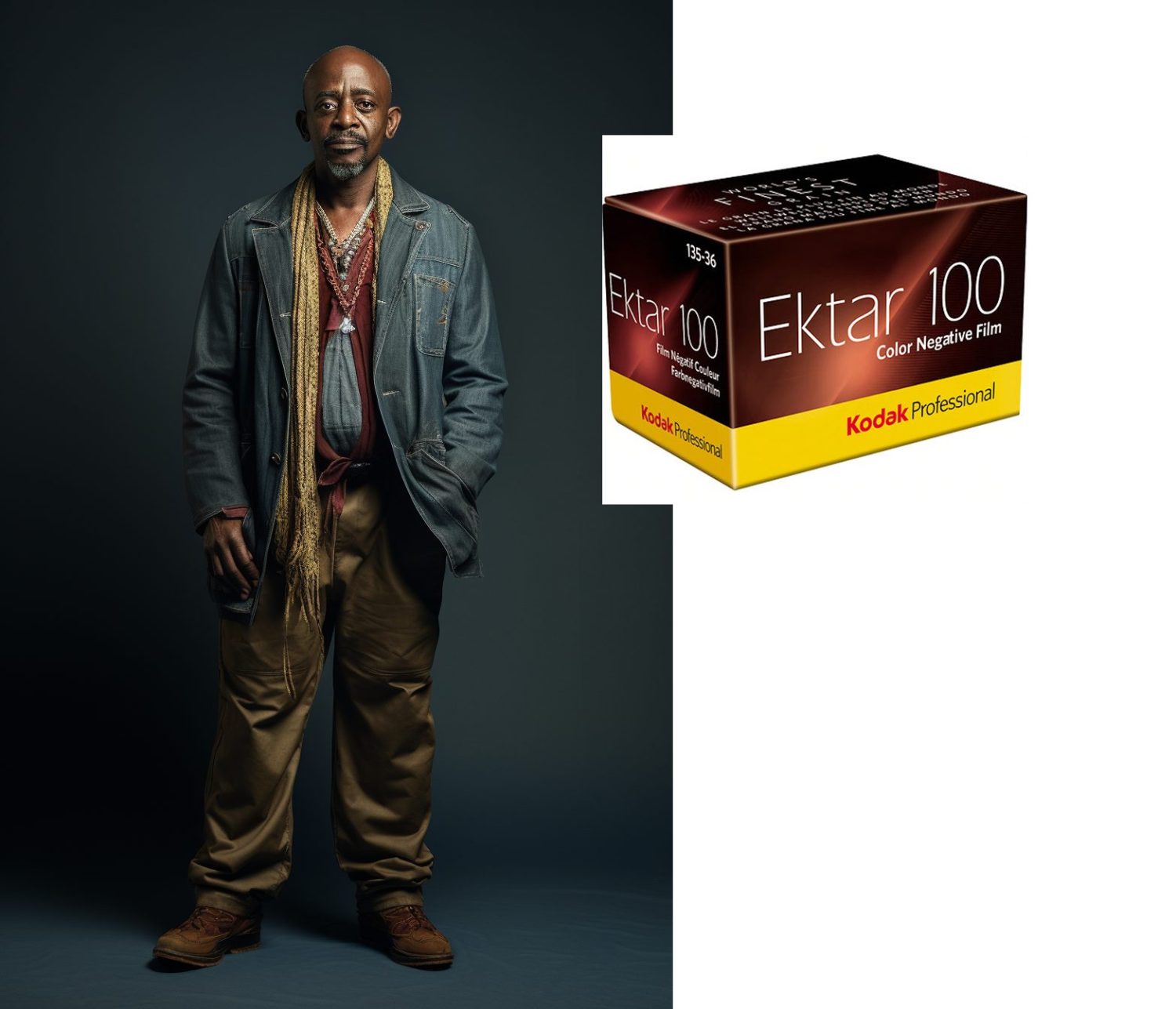 006 – Photographs by Midjourney and Kodak USA – Prompts/Parameters by Kent DuFault
006 – Photographs by Midjourney and Kodak USA – Prompts/Parameters by Kent DuFault
Kodak Professional Ektar 100 is a daylight-balanced color-negative film characterized by an ultra-vivid color palette, high saturation, and an extremely fine-grain structure. The combination of rich colors, fine grain, and optimized sharpness benefit this film’s use for nature, travel, outdoor photography, fashion, product, and other commercial applications.
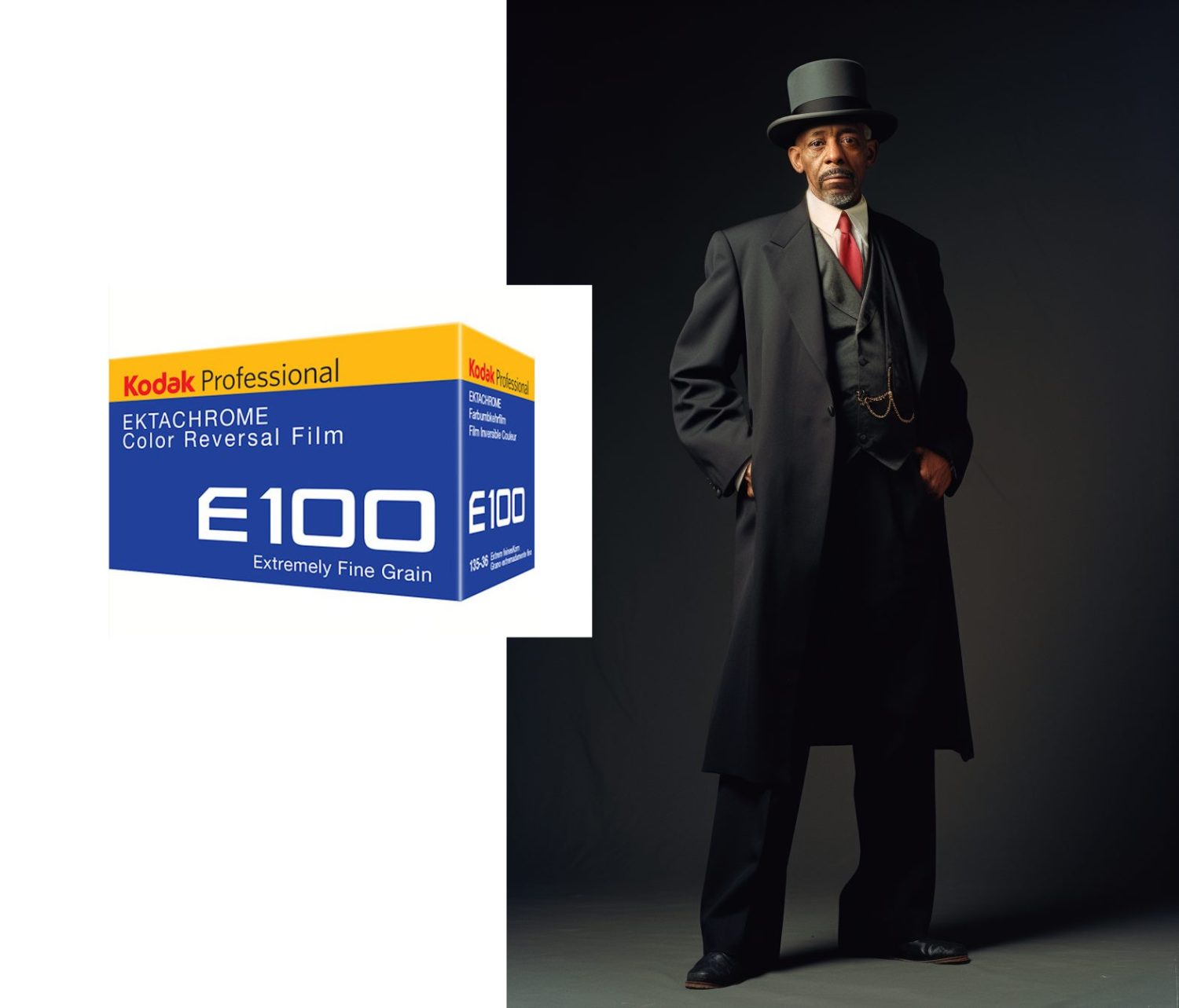 007 – Photographs by Midjourney and Kodak USA – Prompts and Parameters by Kent DuFault
007 – Photographs by Midjourney and Kodak USA – Prompts and Parameters by Kent DuFault
Kodak Professional Ektachrome E100 is a daylight-balanced color transparency film characterized by its extremely fine grain structure, vibrant color rendering, and overall low contrast profile. The lower contrast values contribute to a wide dynamic range and a neutral tonal scale for greater color accuracy, and a low D-min helps to ensure brighter, whiter whites.
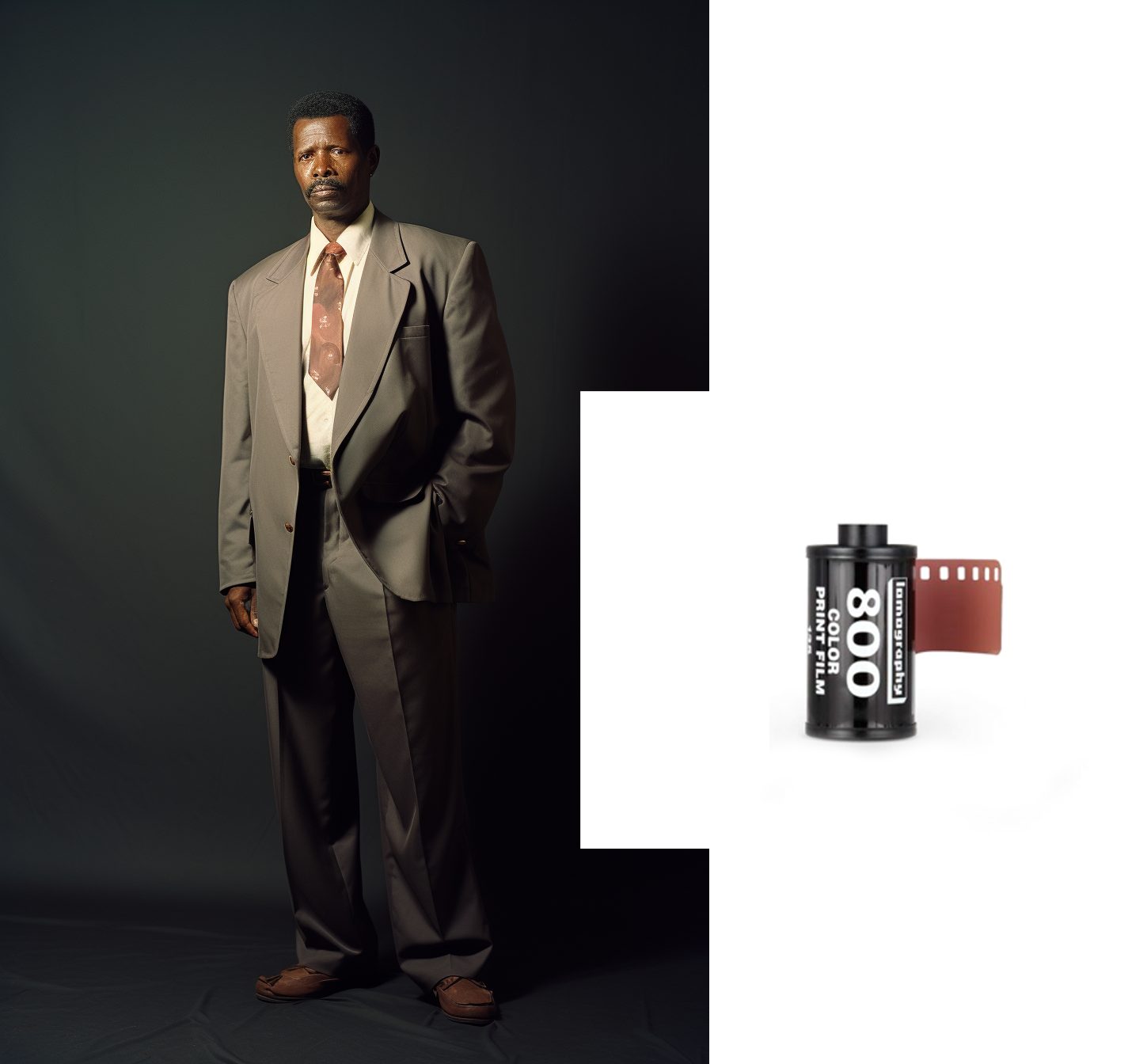 008 – Photographs by Midjourney and Lomography.com – Prompts and Parameters by Kent DuFault
008 – Photographs by Midjourney and Lomography.com – Prompts and Parameters by Kent DuFault
Lomography 800 Color Negative Film is a high-speed daylight-balanced film offering a vivid and saturated color palette in a variety of lighting conditions. Its nominal speed of ISO 800/30° is well-suited for dim lighting and photographing moving subjects. This is an ideal all-around film for working in conditions ranging from overcast daylight to night scenes and enables greater control over your exposure settings.
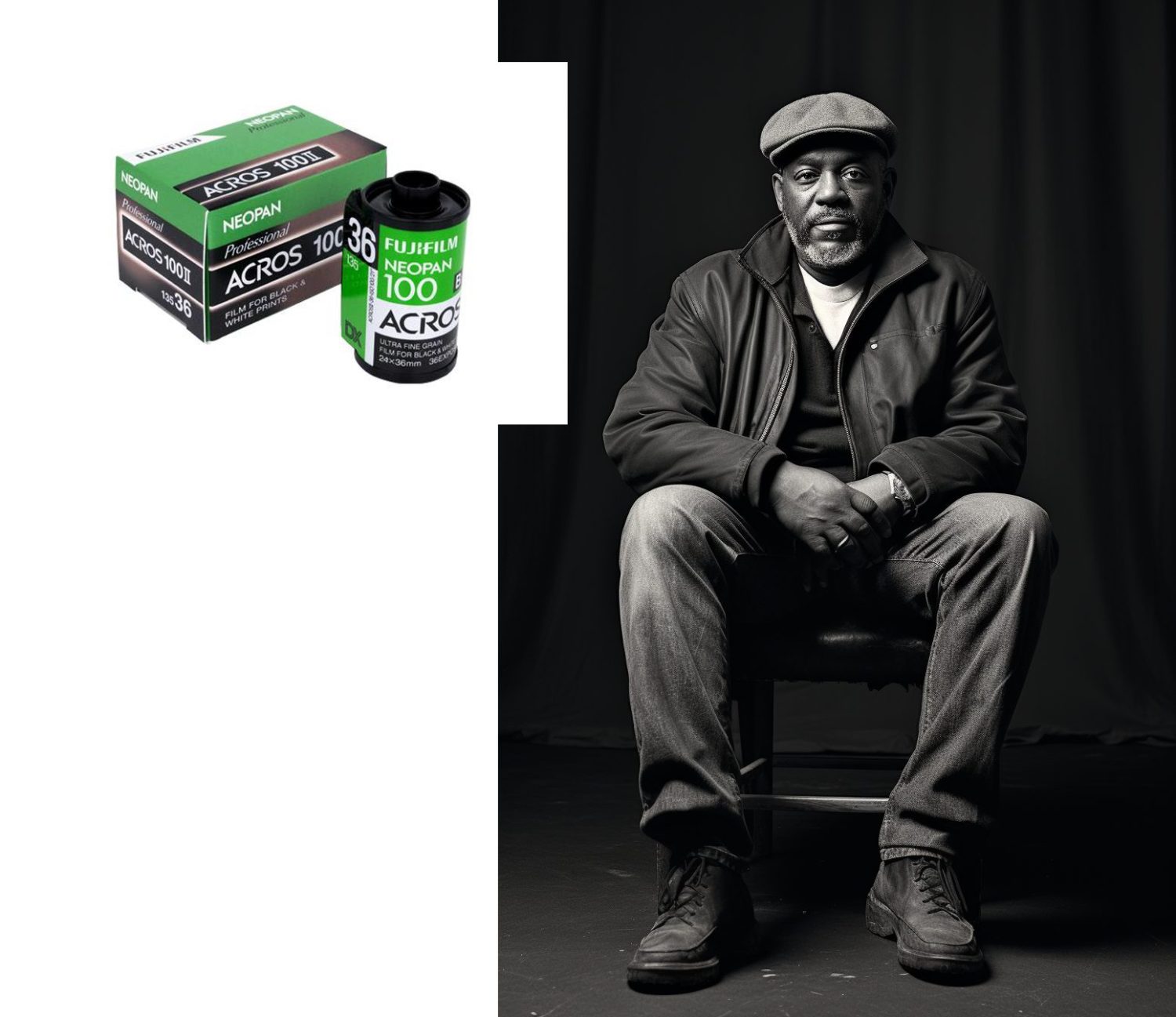 009 – Photographs by Midjourney and Fujifilm USA – Prompts and Parameters by Kent DuFault
009 – Photographs by Midjourney and Fujifilm USA – Prompts and Parameters by Kent DuFault
Neopan 100 Acros II is a medium-speed, ultra-high-image quality black-and-white negative film. It features the world’s highest standard in grain quality among ISO 100 films. It provides outstanding sharpness, rich gradation, wide exposure latitude, and excellent reciprocity characteristics. It is ideally suited to all normal indoor and outdoor photography as well as long-exposure applications.
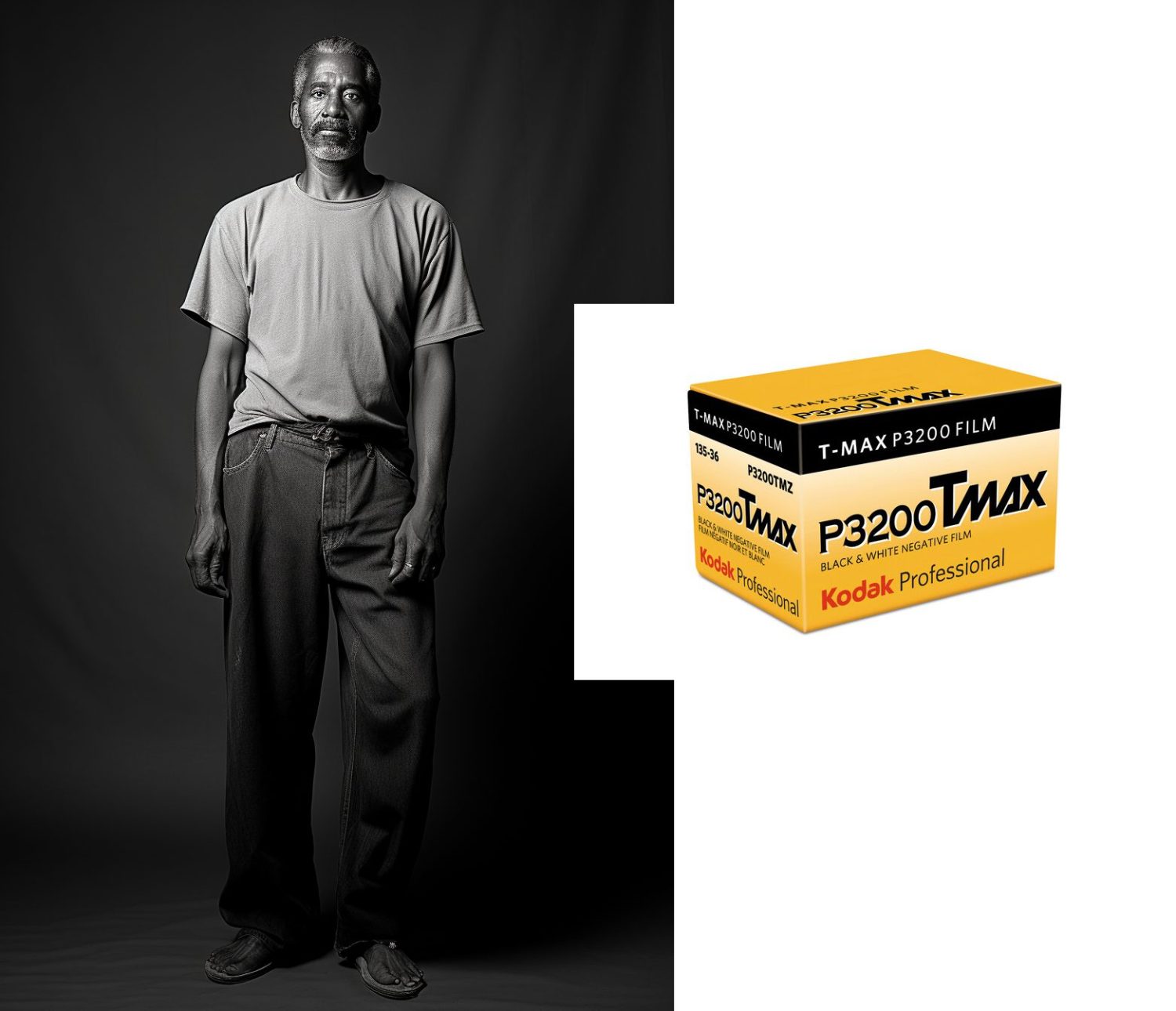 010 – Photographs by Midjourney and Kodak USA – Prompts and Parameters by Kent DuFault
010 – Photographs by Midjourney and Kodak USA – Prompts and Parameters by Kent DuFault
Kodak Professional T-Max P3200 is an ultra-high-speed panchromatic black and white negative film characterized by its unique T-GRAIN emulsion, relatively fine grain structure, and high sharpness. It has a nominal sensitivity of ISO 3200/36°; however, it is categorized as a multi-speed film with a wide exposure latitude from EI 400-25,000 when pushed or pulled. Its versatility and speed benefit shooting handheld in difficult, available lighting conditions and with fast-moving subjects, and its fine grain profile, broad tonal range, and high resolving power benefit scanning and enlarging applications.
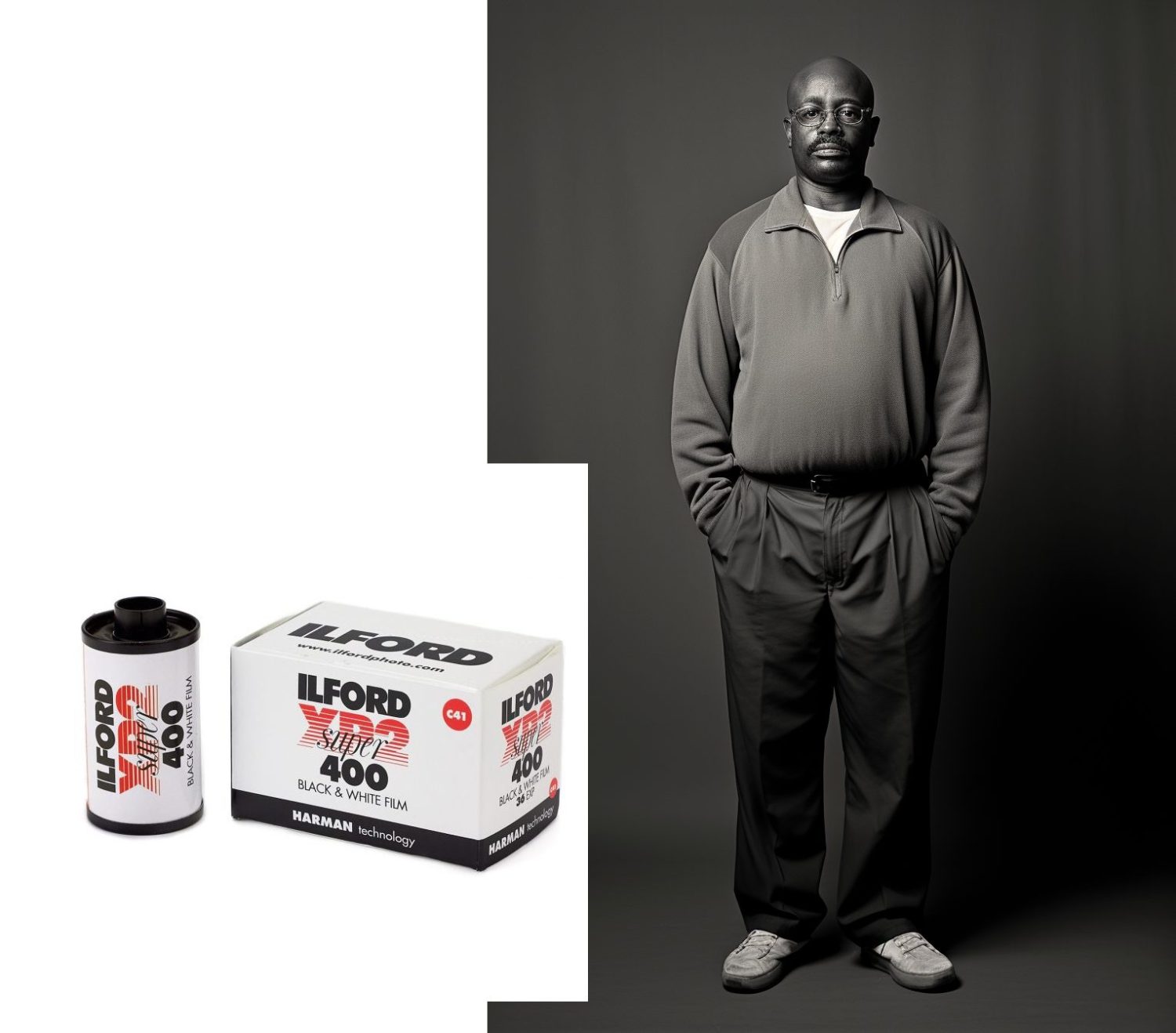 011 – Photographs by Midjourney and Ilford – Prompts and Parameters by Kent DuFault
011 – Photographs by Midjourney and Ilford – Prompts and Parameters by Kent DuFault
ILFORD XP2 SUPER is a fast, sharp, black-and-white film with fine grain and a wide tonal range. It is extremely versatile to use, making it an excellent all-rounder to have in your camera. It has a particularly wide exposure latitude and delivers superior results, including well-defined highlights and shadows, even in unpredictable lighting or high-contrast scenes where there can be wide-ranging subject brightness.
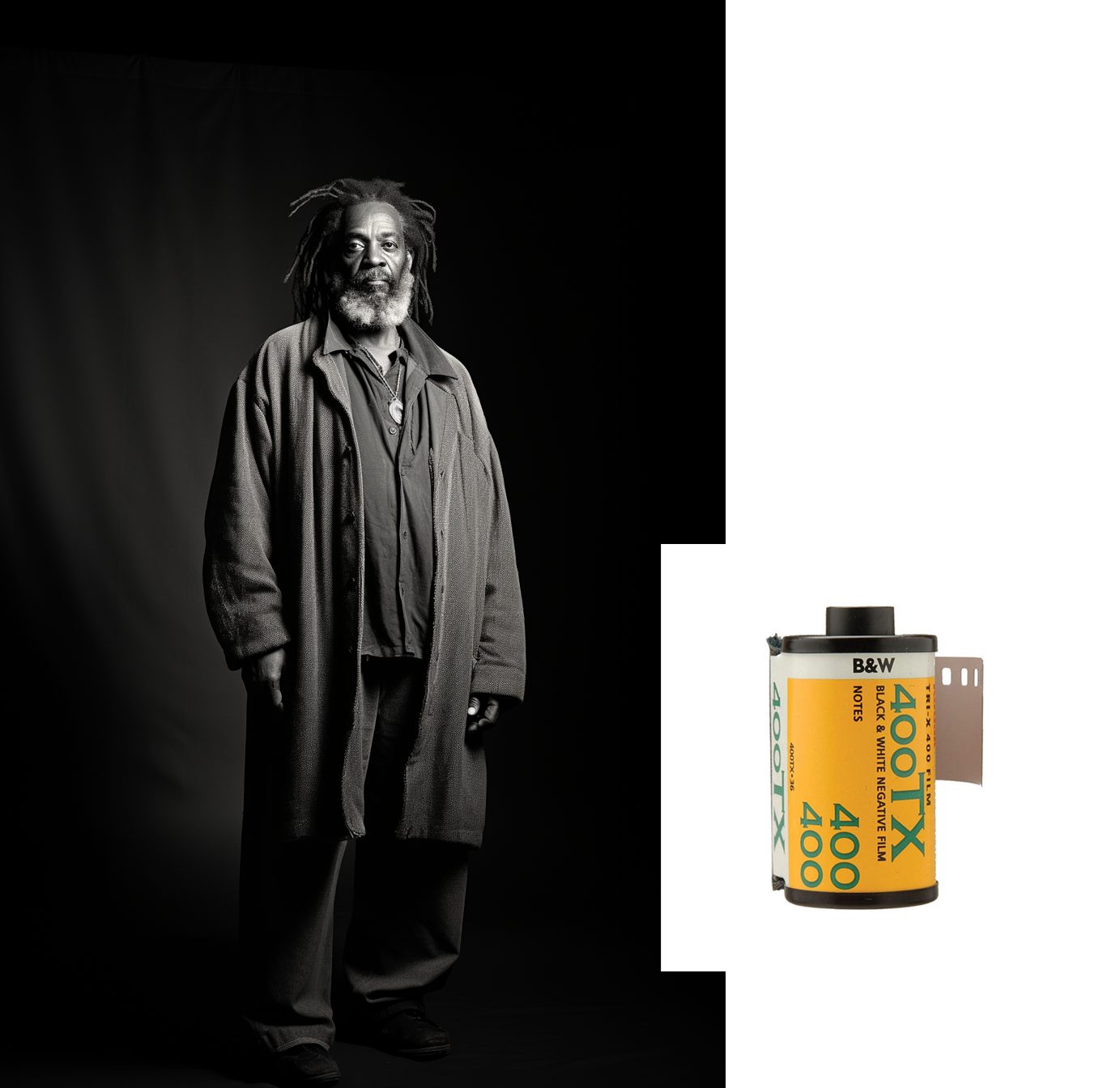 012 – Photographs by Midjourney and Kodak USA – Prompts and Parameters by Kent DuFault
012 – Photographs by Midjourney and Kodak USA – Prompts and Parameters by Kent DuFault
Kodak’s Professional Tri-X 400 Black and White Negative Film is a classic high-speed panchromatic black-and-white film designed for various shooting conditions. Characterized by its fine grain quality, notable edge sharpness, increased contrast, and high resolving power, the Tri-X 400 film also exhibits a wide exposure latitude with consistent tonality. As an all-around, highly versatile film, Tri-X 400 is a standard choice for photographing in difficult lighting conditions as well as when working with subjects requiring good depth of field or for faster shutter speeds.
In Conclusion
As photographers, we can use the Midjourney AI technology to learn about film characteristics. We can compare different film qualities without buying and processing them upfront. We can learn how film manufacturers finessed film types for different shooting situations and how that affected the final ‘look’ of the image. And lastly, we can do all this without spending much money!
Next steps-
Grab your copy of our recommended Synthetic Photography Masterclass clicking this link– (Includes a limited-time discount for our readers): Download Phil Steele’s ‘Synthetic Photography Masterclass’.
